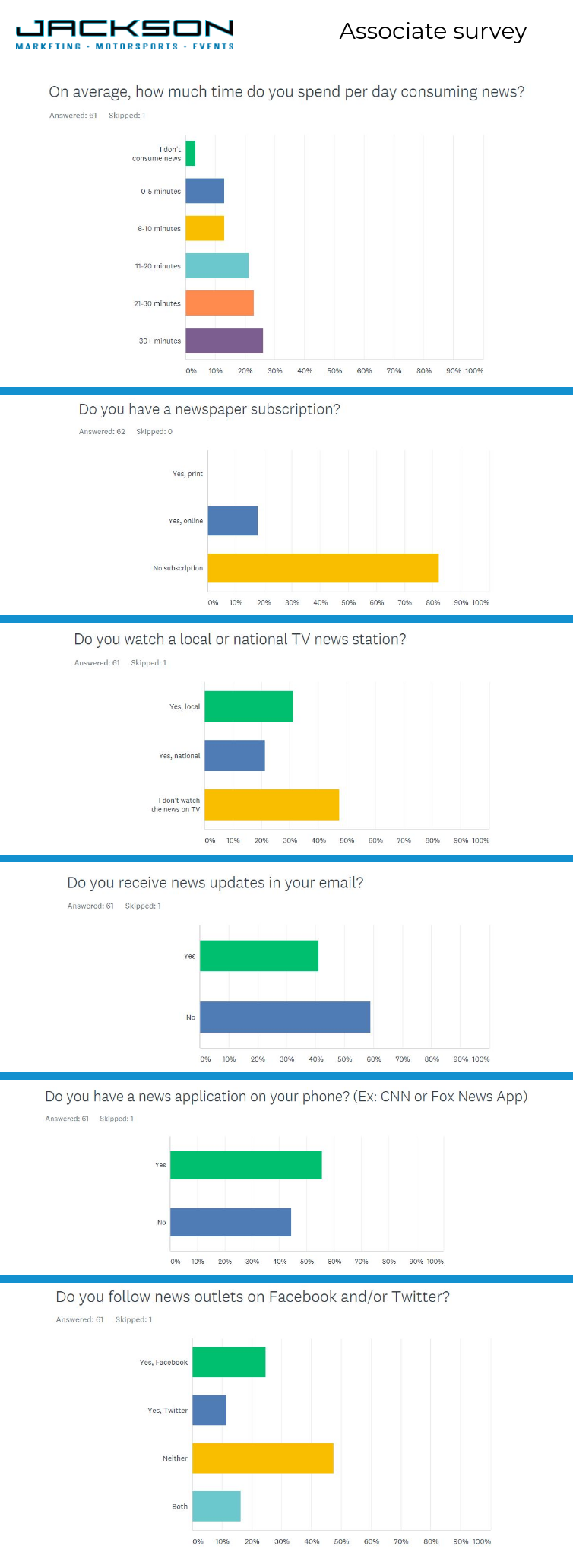By Kathy Vass and Payton Allen
Editor’s Note: This post is approximately 1400 words and could take 10 minutes to read.
 Kathy: About a year ago, I finally canceled the print version of my local newspaper and subscribed to the digital version. For some reason, reading the paper on my iPad doesn’t get me going in the mornings like the smell of ink and the feel of newsprint in (and on) my hands.
Kathy: About a year ago, I finally canceled the print version of my local newspaper and subscribed to the digital version. For some reason, reading the paper on my iPad doesn’t get me going in the mornings like the smell of ink and the feel of newsprint in (and on) my hands.
As a consumer of a certain age, I still prefer my news delivered in sections rather than grids. I’d rather browse ads at my own pace rather than have them rotate or pop up while I’m engrossed in a story. And I much prefer reading a compelling, in-depth story to viewing an auto-play video of an article source. The way in which news is delivered and the way that we consume it has changed drastically in recent years. But perhaps the most dramatic change is the kind of news that is being delivered.
Where’s the news value?
As a former journalist, I attended many afternoon budget meetings during which we discussed the stories that would be served up in the next day’s paper and where they should be placed—on a section front or somewhere inside and which section. Nowadays, content coaches (aka editors) are keeping a constant eye on website metrics to determine which stories are getting the most online engagement. Armed with this digital data, editors say they can post what their online visitors most want to read. Trouble is—and the metrics bear this out—we too often would rather read about an orangutan escaping the local zoo for the second time than how our elected officials are voting on important local, state and national issues that affect our everyday lives.
The line between news and entertainment blurred a while back. Bolstered by broadcast channels, infotainment invaded online news sites, blogs and social media channels. The launch of USA Today in the early 80s helped reduce hard news stories that required some level of detail and explanation to 10 column inches with no jump required. And now many online platforms—to give us a “smarter reading experience”—tell us approximately how long it’s going to take us to get through an article in the event we’ve got to be somewhere in the next minute and a half or have the attention span of a flea.
It’s a generational thing
How you stay informed about what’s happening in the world likely depends on your age. Research shows that digital outlets are the main source of news for the majority of those under 35, including 64% of those between the ages of 18 and 24. Meanwhile, 51% of those over 55 say TV news is their main news source.
In August 2017, two-thirds (67%) of Americans reported that they get at least some of their news via social media—with two in ten doing so often, according to a new survey from Pew Research Center. For the first time in the Center’s surveys, more than half (55%) of Americans ages 50 or older report getting news on social media sites. That compares with 45% who said so in 2016—a worrisome stat to a former journalist and person of a certain age. Here’s why.
With newspaper readership continuing to slide, more local newspapers are being forced out of business. Other forms of communication—namely TV and social media—are taking up the news slack. But is it news that they’re serving up? In my opinion, TV and social media have given in to a celebrity-obsessed, entertainment culture. To compete, platforms are spending too much time entertaining and not nearly enough time educating and informing.
 Payton:
Payton:
One and Done
I don’t know about you, but is anyone else feeling like you have about 22 seconds to keep up with current events? I don’t want that statement to belittle the importance of staying informed, because it’s crucial to know what is happening around us. But, I like to get my news in quick blurbs that I can explore further if I so choose. Watching a 30-minute news segment or sitting down for half an hour to read a paper just doesn’t work with my lifestyle. When I do have free time, I want to use it to do enjoyable, fun things, not read up on the newest crimes and catastrophes. I care about them, and I want to know what is going on, but I don’t want to be consumed by it. Anyone with me?
There’s an App for That
Instead of tuning in to news stations on television, I use their apps for my phone. Not only is it convenient, it’s timely. Push notifications will appear on my screen whenever a big story breaks. This way, if something that I am particularly interested in happens, I can go to the website and gather more information immediately. If something occurs that isn’t crucial news (cough, Selfie Kid at the Super Bowl) then I don’t have to watch or read a whole segment to find out that I only wasted time. A current headline on a national news website says, “This water gun can cut through concrete.” Yeah, I don’t choose to waste a second on that one, so I won’t. Using the app makes it easy for me to navigate past pointless, fluffy stories.
A Little Bird Told Me…
Another way I like to stay informed is by following reliable news outlets and politicians on Twitter. The key word here is RELIABLE. To quote a rather newsworthy man, “FAKE NEWS!” Sadly, there really is a lot of it out there. Getting news on social media can be tricky, so I make sure to only follow locally and nationally reputable news outlets. Twitter is an interesting way to get news because not only can you see what big sources are releasing, but you can see how the public is reacting by reading the strands that follow each tweet. Some tweets link directly to news sources, so you can easily expand your knowledge there, too.
Skim It
I hope you aren’t using this practice at this moment, but does anyone else like to skim when you read? GUILTY! Sometimes news articles are just too long. It can be hard to get a quick, concise message when the article takes 20 scrolls on an iPhone screen to read. Enter: theSkimm. theSkimm is a membership company made for female Millennials. It started as a newsletter that would break down the most important news each morning in an easy-to-read format. Now they include the late-breaking news, links to reliable sources and even some fun pop culture references. theSkimm frequently has interviews, videos, photos and website links that make each newsletter interesting and interactive. I like to get the letter delivered to my email each morning but there is also a web browser version and an app.
So What’s Important?
I personally don’t like to spend much time reading about news that isn’t necessary. As Kathy mentioned, the frequent escapes of the orangutan at the zoo should not get the same amount of coverage as influential bills being discussed and military happenings. While it can be fun to chat about the silly, click-bait items, they have little or no effect on society. I don’t prefer to read about them because they simply aren’t news. While they may give us a chuckle or induce a certain shock factor, these stories should have a home away from news outlets. This is one reason that I like to consume my news digitally. Don’t like it? Aren’t interested? Scroll past it. I don’t care to read five paragraphs on a couple who has broken a Cracker Barrel eating record. We can all agree being informed and up-to-date on what is going on around us is super important, so maybe the way we consume it is just a means to an end. As long as that “end” is a well-informed, engaged citizen, then I think the rest is just a matter of preference.
How Do You Get Your News?
That’s what we asked our fellow Jackson associates in a short survey as we were working on this blog post. We were pleasantly surprised that 62 of our coworkers participated in the survey. As it turns out, our workplace pretty much reflects the national data.
Since we’ve decided that how you stay informed about what’s happening in the world likely depends on your age, it’s important to note the generational breakdown of our respondents:
Baby Boomer (born 1946-1964) 24.59%
Generation X (born 1965-1980) 22.95%
Generation Y/Millennium (born 1981-1997) 50.82%
Generation Z (born 1998 or after) 1.64%
And now, the results:









